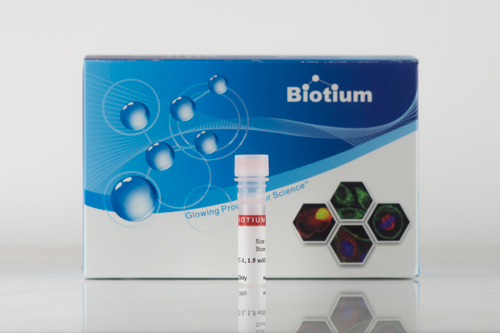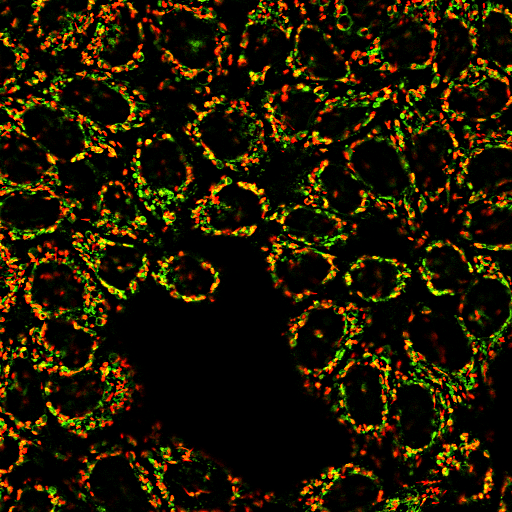Aquaphile™ JC-1
An improved and more soluble formulation of the JC-1 dye used for ratiometric detection of mitochondrial potential changes.
Please fill in the inquiry form and we will contact you shortly.
Wishlist updated! View wishlist
Product Description
Aquaphile™ JC-1 is a novel formulation of the JC-1 dye used for quantifying changes in mitochondrial potential. This optimized formulation has improved solubility and minimal dye aggregation over JC-1 chloride and iodide salts.
Features
- Used for ratiometric detection of mitochondrial potential changes
- Novel Aquaphile™ formulation with improved solubility and minimal dye aggregation
- Improved solubility without changes to the original JC-1 chemical structure
- For fluorescence microscopy, flow cytometry, or fluorescence microplate reader
- Supplied as a 500X stock solution (1.5 mM in DMSO), suitable for 125 (200 uL) assays
Spectral properties
- Ex/Em (cytoplasm): 510/527 nm
- Ex/Em (polarized mitochondria): 585/590 nm
JC-1 is a widely used mitochondrial dye that stains mitochondria in living cells in a membrane potential-dependent fashion. JC-1 monomer is in equilibrium with so-called J-aggregates, which are favored at higher dye concentrations or higher mitochondrial membrane potential. Monomeric JC-1 emits green fluorescence at 527 nm, while the J-aggregates emit red fluorescence at 590 nm. Therefore, it is possible to quantify mitochondrial potential changes with fluorescence ratioing. In healthy cells, the dye localizes to mitochondria with red fluorescence, while in apoptotic cells with depolarized mitochondrial potential, the dye localizes in the cytoplasm and fluoresces green, making JC-1 useful for apoptosis studies. This dye has also been applied in high-throughput drug screening applications.
Novel Aquaphile™ Formulation for Improved Solubility and Performance
The tendency of JC-1 to aggregate makes it useful for mitochondrial potential detection but hinders its use in cellular imaging. Because of its hydrophobic nature, JC-1 is prone to aggregate when diluted in buffer and cell culture medium, which can interfere with microscopic imaging and generates a false positive J-aggregate signal outside of cells. To address this issue, Biotium chemists developed the Aquaphile™ formulation for JC-1. Unlike alternative dyes like JC-9 and JC-10, Aquaphile™ JC-1 has improved solubility without alterations to the chemical structure of the well-characterized original JC-1 dye. The optimized formulation facilitates preparation of staining solutions with minimal dye aggregation compared to JC-1 iodide and JC-1 chloride salts, particularly when staining solution is prepared in cell culture medium.
For other mitochondrial stains see our MitoView™ Dyes or the mitochondrial stains section on our Cellular Stains page.
References
- Commun Biol, 6(1), 664(2023), DOI:10.1038/s42003-023-05043-2
- PNAS, 88(9), 3671(1991), DOI: 10.1073/pnas.88.9.367
- Biochemistry, 30(18), 4480(1991), DOI: 10.1021/bi00232a015




